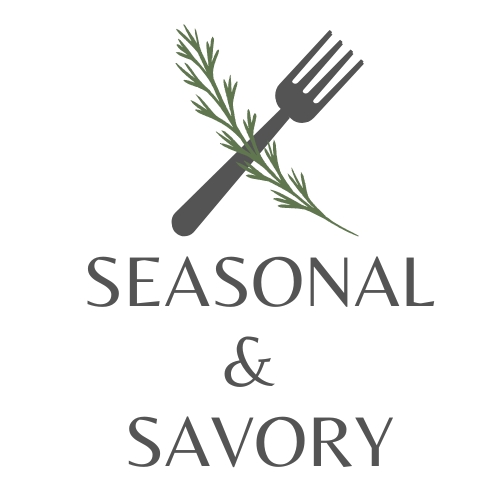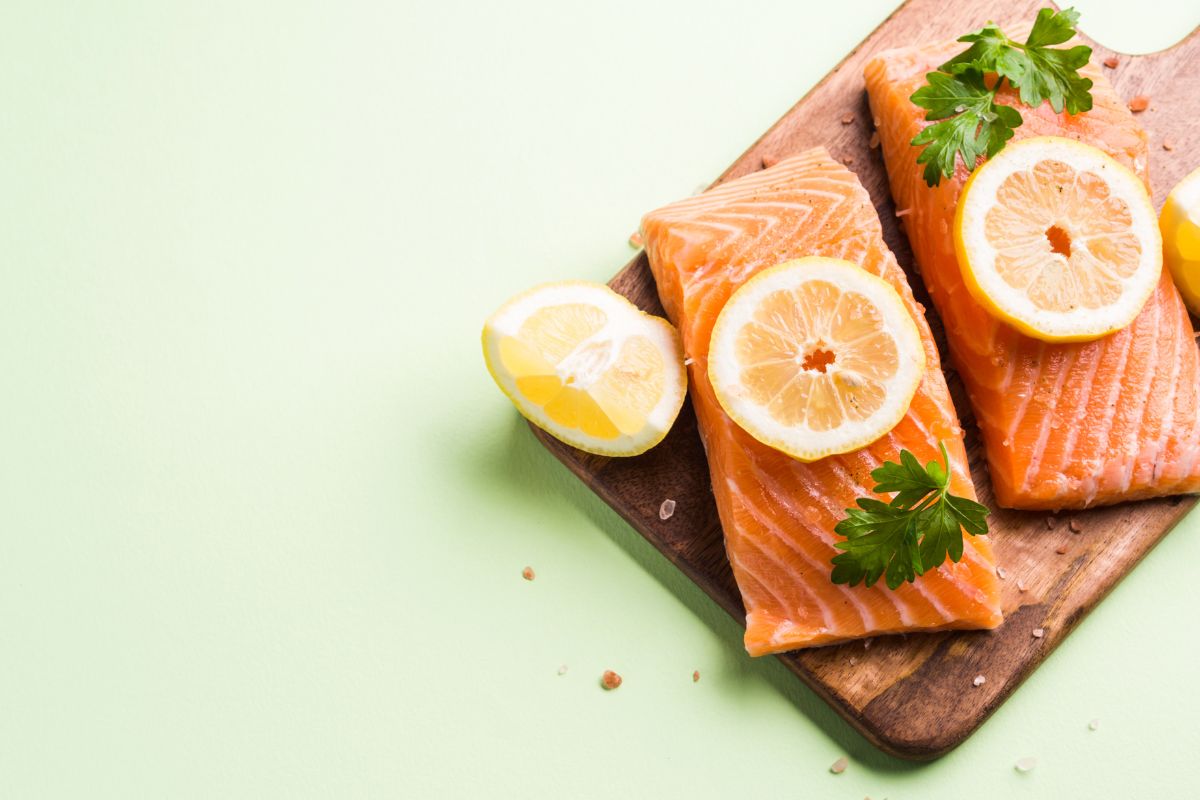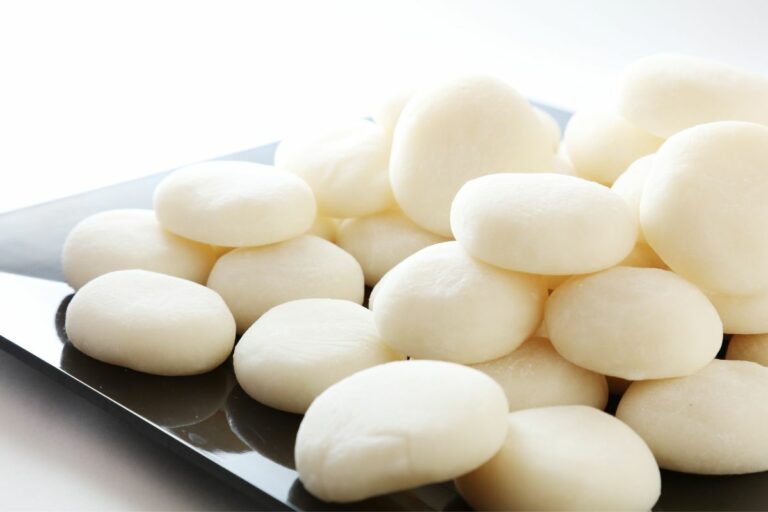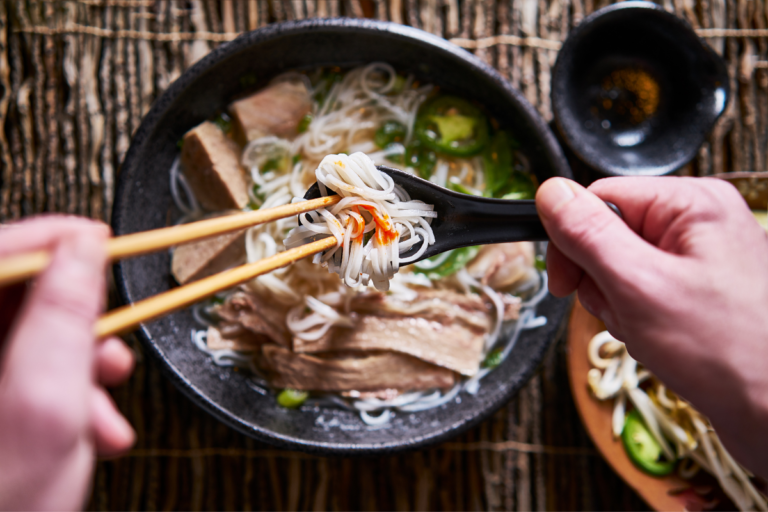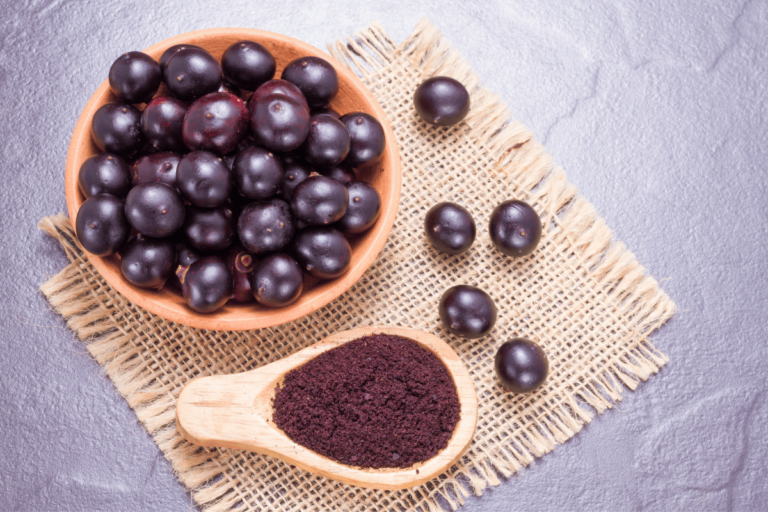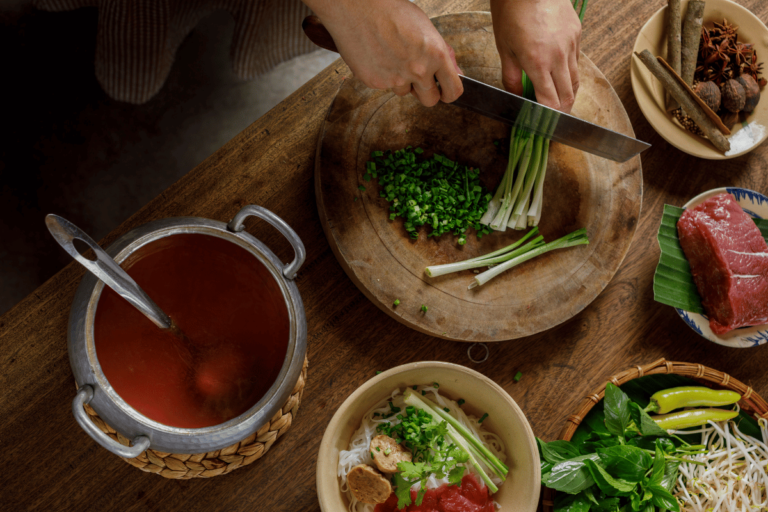What Does Raw Salmon Taste Like?
You might hear that raw salmon is rich in essential nutrients, including omega-3 fatty acids, B vitamins, potassium, and selenium.
But if you haven’t tasted raw salmon, you might ask, what on earth does raw salmon taste like and what are the benefits of consuming it?
Raw salmon has a delicate, light flavor and a firm, moist texture. It is typically described as having a slightly sweet, buttery taste. The flavor of raw salmon can vary depending on the type of salmon and where it was caught, as well as factors such as the fish’s diet and age.
To elaborate more about raw salmon’s taste and its overall experience of consuming it, we have a consolidated walkthrough written for you in this article.
The Different Flavors of Raw Salmon
If you don’t have enough time to read through the long texts, just have a look at the table below to get an idea about the taste of different types of salmon.
| Types of Salmon | What does it taste like? |
| Sockeye Salmon | Sweet |
| King Salmon | Rich |
| Coho Salmon | Mild |
| Pink Salmon | Delicate |
Raw salmon has become increasingly popular in recent years, and with good reason. Not only is it incredibly nutritious, but it is also incredibly versatile, offering a variety of different flavors and textures.
The flavor of raw salmon depends largely on the species of fish and its location. Wild salmon, for example, tends to have a more intense flavor than farmed salmon. Additionally, salmon from cold northern waters tends to be firmer and more intensely flavored than salmon from warm southern waters.
When it comes to the different flavors of raw salmon, there are a few key categories. The most common flavors are mild, medium, and strong. Mild salmon is often described as having a slightly sweet flavor, with a buttery texture. Medium salmon has a slightly fuller flavor, with a firmer texture. Strong salmon has an intense flavor and a meaty texture.
In addition to the flavor of the fish, the preparation of the salmon can also affect the flavor. For example, marinating salmon in citrus juice or a soy sauce-based marinade can give the fish a tangy flavor. Additionally, adding herbs and spices to the marinade can give the salmon a unique flavor.
And then there are a few other flavors that can be found in raw salmon. Smoked salmon has a unique flavor, due to the smoking process, while cooked salmon has a cooked flavor. Besides that, cured salmon such as gravlax has a salty and slightly sweet flavor.
No matter what flavor of raw salmon you prefer, there is sure to be something that appeals to you. From mild to strong, there are a variety of different flavors to choose from, allowing you to enjoy a delicious and nutritious meal.
Sockeye Salmon
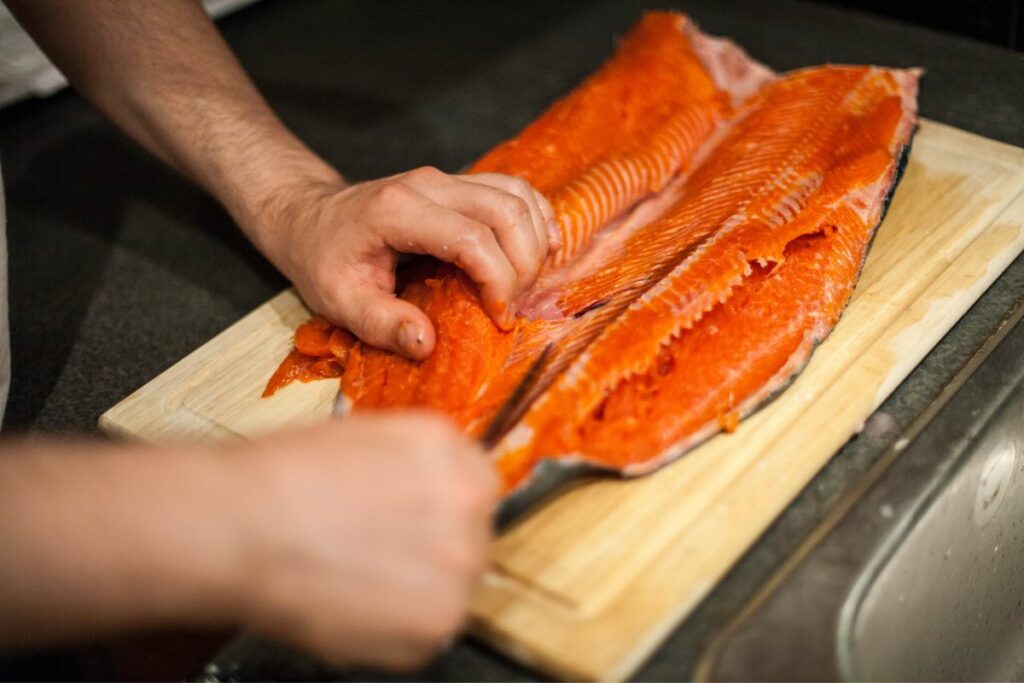
Sockeye Salmon is known for its rich, flavorful taste and firm, red flesh. The flavor of sockeye salmon is often described as being rich and full, with a slightly sweet taste.
This is due to the high-fat content of sockeye salmon, which gives it a moist, tender texture and a rich, flavorful taste. Sockeye salmon also has a higher oil content than other types of salmon, which contributes to its distinctive flavor.
The sweet taste of sockeye salmon is also enhanced by its diet, which consists primarily of krill and other small crustaceans that contain natural sugars.
Overall, the combination of its high-fat content, natural oils, and unique diet gives sockeye salmon its distinctively rich and slightly sweet flavor.
King Salmon
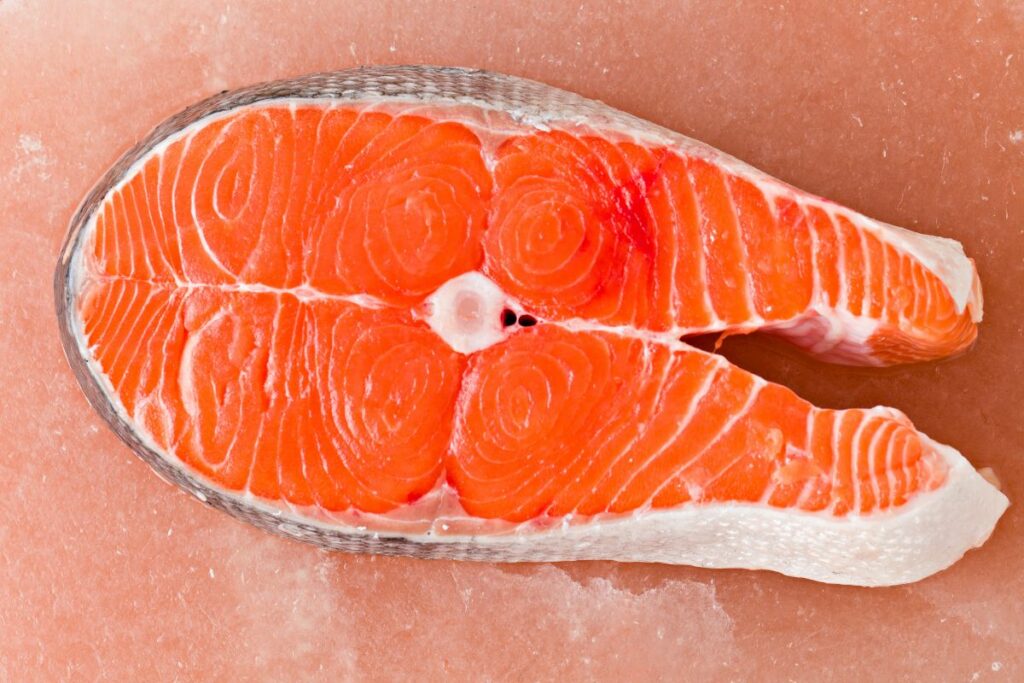
King salmon, also known as chinook salmon, is known for its rich, flavorful taste and moist, tender flesh. The rich flavor of king salmon is due in part to its high-fat content, which gives it a moist, tender texture and a rich, flavorful taste.
King salmon also has a higher oil content than other types of salmon, which contributes to its distinctive flavor. In addition, the diet of king salmon, which consists primarily of small fish and crustaceans, is thought to contribute to the rich flavor of the fish.
To sum up, the combination of its high-fat content, natural oils, and unique diet gives king salmon its rich, flavorful taste.
Coho Salmon
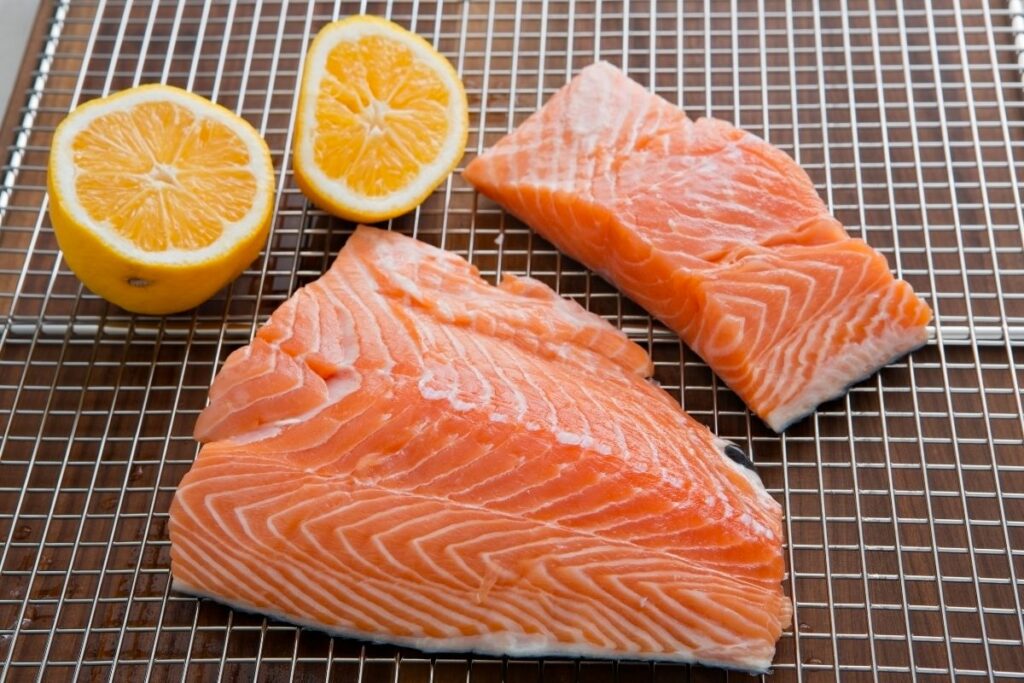
Coho salmon, also known as silver salmon, is known for its mild, delicate flavor and firm, pink flesh. Coho salmon generally has a lower fat content than other types of salmon, which contributes to its milder flavor.
In addition, coho salmon tends to have a less rich, oily taste than other types of salmon, which also contributes to its mild flavor.
Coho salmon’s diet, which consists primarily of small fish and crustaceans, may also contribute to its mild flavor.
In short, the combination of its lower fat content and unique diet give coho salmon its mild, delicate flavor.
Pink Salmon
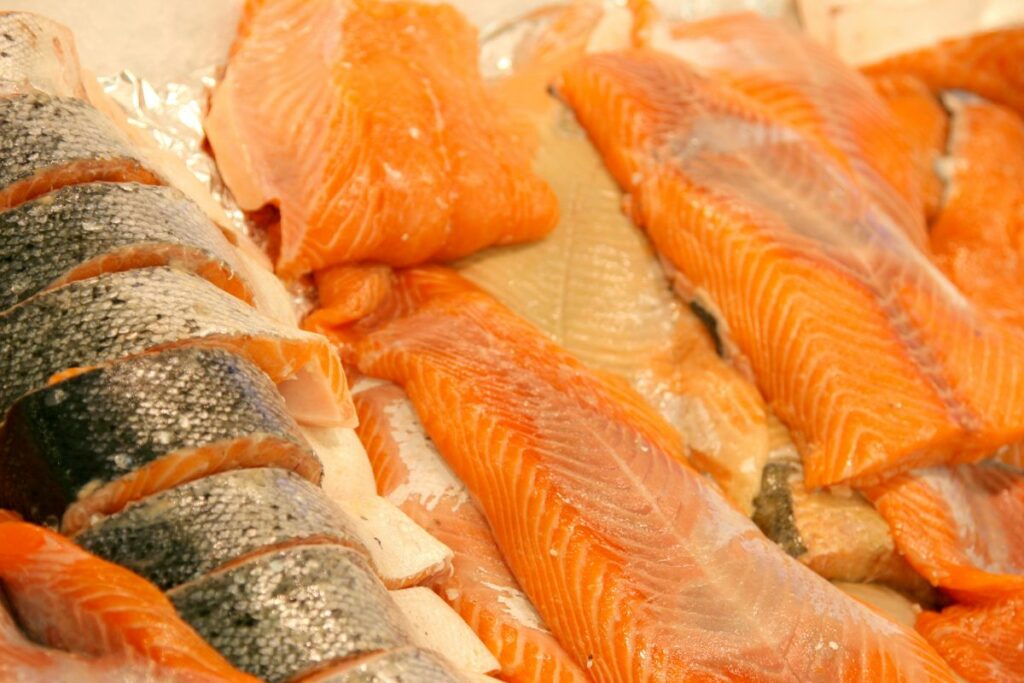
Pink salmon, also known as humpy salmon or humpback salmon, is known for its delicate mild flavor and firm pink flesh.
Pink salmon generally has a lower fat content than other types of salmon, which contributes to its delicate flavor.
Moreover, pink salmon tends to have a less rich, oily taste than other types of salmon, which also contributes to its mild flavor.
Pink salmon’s diet, which consists primarily of small fish and crustaceans, may also contribute to its delicate flavor.
Overall, the combination of its lower fat content and unique diet give pink salmon its mild, delicate flavor.
Raw Salmon Recipes
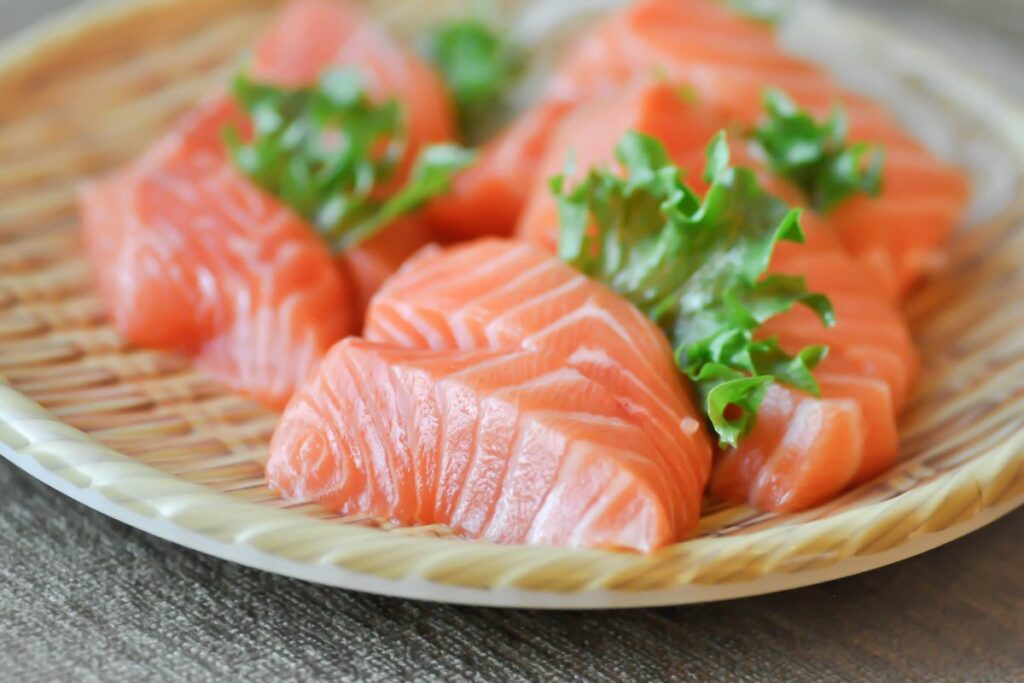
Salmon Tartare
Finely chop fresh, sushi-grade salmon and mix with diced red onion, capers, chopped fresh dill, and a squeeze of lemon juice. Serve on top of crackers or sliced cucumber rounds.
Salmon Carpaccio
Slice fresh, sushi-grade salmon thinly and arrange it on a plate. Drizzle with olive oil and a squeeze of lemon juice, and sprinkle with chopped fresh herbs and a pinch of sea salt.
Salmon Sashimi
Cut fresh, sushi-grade salmon into thin slices and arrange it on a plate. Serve with soy sauce, wasabi, and pickled ginger on the side.
Cured Salmon
Mix equal parts salt and sugar and coat a filet of fresh salmon. Let it sit in the mixture for a few hours in the refrigerator, then rinse off and slice thinly. Serve with crackers or toast points and a dill or mustard sauce.
Remember to use only fresh, high-quality sushi-grade salmon for these recipes, and to handle raw fish safely to avoid the risk of foodborne illness.
Nutrition Facts of Raw Salmon
Salmon is a good source of protein, omega-3 fatty acids, and several important vitamins and minerals, including vitamin B12, vitamin D, and selenium. It is also low in carbs.
These nutrition facts are for raw salmon and may vary slightly depending on the specific type and cut of salmon. It is important to note that the nutritional content of cooked salmon may be different from that of raw salmon due to changes in moisture content and the addition of ingredients or seasonings during cooking.
| Nutrient | Amount per 3.5 ounces (100 grams) of Raw Salmon |
| Calories | 208 |
| Protein | 20.7 grams |
| Fat | 113.6 grams |
| Saturated Fat | 2.1 grams |
| Cholesterol | 53 mg |
| Fiber | 0 grams |
| Sodium | 73 mg |
What’s The Best Way to Store Raw Salmon?
The best way to store raw salmon is to keep it chilled to prevent the growth of bacteria and other microorganisms that can cause foodborne illness. Here are a few tips for storing raw salmon:
Store raw salmon in the refrigerator
Raw salmon should be kept in the refrigerator at a temperature of 40°F (4°C) or below to prevent the growth of harmful bacteria.
Use a sealed container for this. Place the raw salmon in a sealed container or wrap it tightly in plastic wrap or aluminum foil to prevent it from coming into contact with other foods or surfaces.
Raw salmon should be used within 2 days of purchasing it to ensure that it is fresh and safe to eat.
Freeze for longer storage
If you won’t be able to use the raw salmon within 2 days, you can freeze it to extend its shelf life. To freeze salmon, wrap it tightly in plastic wrap or aluminum foil and place it in an airtight container or zip-top bag. Frozen salmon can be stored in the freezer for up to 6 months.
It is important to handle raw salmon safely to prevent the risk of foodborne illness. Always wash your hands thoroughly before handling raw salmon and avoid cross-contaminating other foods with raw salmon juices.
Benefits of Eating Raw Salmon
Let’s see what health benefits you can expect from raw salmon.
Nutrient density
Raw salmon is a good source of nutrients, including protein, omega-3 fatty acids, and several important vitamins and minerals. These nutrients may be more readily available in raw salmon than in cooked salmon, as cooking can destroy or reduce the availability of some nutrients
Weight management
Raw salmon is low in calories and high in protein, which can help with weight management. It may also be more filling than other types of protein, which may help with appetite control.
Cardiovascular health
Omega-3 fatty acids, which are found in high levels in salmon, have been shown to have a number of health benefits, including reducing the risk of heart disease.
Brain health
Omega-3 fatty acids may also have a positive effect on brain health and cognitive function.
Cooked Salmon vs Raw Salmon
There are a few differences between raw and cooked salmon.
| Comparison Factors | Raw Salmon | Cooked Salmon |
| Texture | Soft and Tender | Firm and Flaky |
| Nutrition | Higher in Vitamins and Minerals | Lower in Vitamins and Minerals |
| Flavor | Mild and Sweet | Milder and Delicate |
| Smell | Strong fresh ocean scent | Cooked fish smell |
How to Tell If Salmon Has Gone Bad?
Don’t be sick by consuming spoiled salmon. Be sure that the salmon is fresh with the tips below.
- Change in color: Fresh salmon is typically pink or orange in color. If the salmon has turned gray or brown, it may be spoiled.
- Change in texture: Fresh salmon should be firm and moist. If it has become slimy or mushy, it may be spoiled.
- Off odor: Fresh salmon should have a mild, fishy smell. If it has an unpleasant or sour smell, it may be spoiled.
- Presence of mold: If you see mold on the salmon, it is definitely spoiled and should be discarded.
It is important to note that these signs may not always be obvious, especially if the salmon has been frozen.
In general, it is best to err on the side of caution and discard any salmon that looks or smells questionable. To prevent salmon from going bad, it is important to store it properly in the refrigerator or freezer and to use it within a few days of purchasing it.
FAQs
Is raw salmon safe to eat?
Raw salmon can be safely eaten as long as it is fresh and has been handled properly. It is important to purchase fresh, high quality salmon from a reputable source and to store it properly to minimize the risk of food poisoning.
What’s The best enjoy the taste of raw salmon?
Raw salmon is often enjoyed as sashimi or sushi, thinly sliced and served with soy sauce and wasabi. It can also be marinated and served as a tartare or crudo.
Can raw salmon be frozen?
Raw salmon can be frozen but it is important to wrap it properly to prevent freezer burn. It can either be plastic or aluminum foil wrapped.
Wrap-Up
Hence we come to the conclusion that raw salmon has a unique and delicious flavor. It is mild and slightly sweet, but also has a bit of a fishy taste.
It pairs well with citrus and other strong flavors, such as garlic, dill, and ginger. While it may not be for everyone, raw salmon is a great way to enjoy the taste of the sea and all its health benefits.
Try it in salads, sushi, and other dishes to experience the unique flavor of raw salmon.
